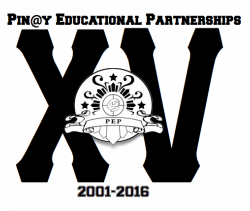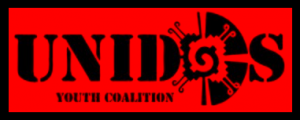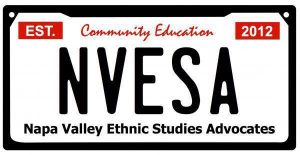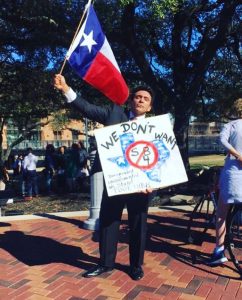Overview
Grassroots organizations for curricular diversity extend beyond coalitions formed directly in or around public schools. As a large focus of curricular diversity means embracing material produced by authors of many different identities, many of the included organizations work on efforts to support and promote a wide range authors. Additionally, these grassroots organizations often cite promoting curricular diversity as one of their many objectives, in what is often groups focused around the increased visibility of minority culture and expression.
All groups, regardless of being coalitions formed within schools or within publishing communities, overwhelmingly insist upon the importance of a multitude of perspectives in educational consumption. Particularly publishing grassroots efforts face problems of discrimination within publishing practices, which largely support and fund homogenous, white, and revisionist tellings of stories and history. At a school level, several of the selected grassroots groups are working to combat laws banning ethnic studies or particular books within the classroom.
Examples of Grassroots Organizations
 Pin@y Educational Partnerships (Bay Area, CA) PEP is a service learning program that has created a partnership between San Francisco State University, public schools, and the larger community of the Bay Area. Within the realm of curricular diversity, PEP works to implement Ethnic Studies courses within public schools across the state. With this mission, it helps train new teachers how best to execute and develop this curriculum.
Pin@y Educational Partnerships (Bay Area, CA) PEP is a service learning program that has created a partnership between San Francisco State University, public schools, and the larger community of the Bay Area. Within the realm of curricular diversity, PEP works to implement Ethnic Studies courses within public schools across the state. With this mission, it helps train new teachers how best to execute and develop this curriculum.
U nited Non-discriminatory Individuals Demanding Our Studies (Tuscon, Arizona) UNIDOS is a grassroots organization based in Tuscon, Arizona, It was created in response to H.B. 2281, a governmental policy which banned Ethnic Studies throughout the state of Arizona. UNIDOS is a youth coalition of students from various local high schools, which works in the community to education others on the importance of ethnic studies and protect the value of it within public schools.
nited Non-discriminatory Individuals Demanding Our Studies (Tuscon, Arizona) UNIDOS is a grassroots organization based in Tuscon, Arizona, It was created in response to H.B. 2281, a governmental policy which banned Ethnic Studies throughout the state of Arizona. UNIDOS is a youth coalition of students from various local high schools, which works in the community to education others on the importance of ethnic studies and protect the value of it within public schools.
 Napa Valley Ethnic Studies Advocates (Napa Valley, CA) NVESA is a coalition of high school students, college students, parents and educators that work to implement ethnic studies courses into their local public schools. They recently produced a documentary highlighting the scandal of recent attempts to abolish Mexican-American studies in certain districts.
Napa Valley Ethnic Studies Advocates (Napa Valley, CA) NVESA is a coalition of high school students, college students, parents and educators that work to implement ethnic studies courses into their local public schools. They recently produced a documentary highlighting the scandal of recent attempts to abolish Mexican-American studies in certain districts.
 Nuestra Palabra (Houston, Texas) Although not a grassroots organization directly related to local school movements, Nuestra Palabra works out of Houston, Texas to promote Latino literature and literacy. This pertains to a discussion of curricular diversity within schools, because Nuestra Palabra helps to guarantee that there are diverse texts ready for consumption by young readers.
Nuestra Palabra (Houston, Texas) Although not a grassroots organization directly related to local school movements, Nuestra Palabra works out of Houston, Texas to promote Latino literature and literacy. This pertains to a discussion of curricular diversity within schools, because Nuestra Palabra helps to guarantee that there are diverse texts ready for consumption by young readers.
El Puente Arts Center (Brooklyn, New York)
![]()
El Puente Arts Center is a Latino cultural center in New York. It runs a leadership program for local youth, a community center, and a recently attempted school. El Puente works to spread the breadth and culture of Latino culture to Brooklyn and beyond. They run several different dance ensembles that aim to engage local children with outlets for cultural expression. They now have several locations across New York including the neighborhoods of Williamsburg, Bushwick, and Beacon.
 Librotraficante (Houston, Texas) Tony Diaz, although a singular man, largely heads a movement relevant to aims of curricular diversity in Houston, Texas. Polarized in 2013 from Texas’ widespread attempts to resist ethnic studies statewide, Diaz now helps to organize local action to continue fighting state-originated resistance to diverse curriculums. He appears on local radio and TV shows. Again, although he himself is not an activist movement, analysis of his outreach and created communities show him as a pioneer for local acts of organization and resistance.
Librotraficante (Houston, Texas) Tony Diaz, although a singular man, largely heads a movement relevant to aims of curricular diversity in Houston, Texas. Polarized in 2013 from Texas’ widespread attempts to resist ethnic studies statewide, Diaz now helps to organize local action to continue fighting state-originated resistance to diverse curriculums. He appears on local radio and TV shows. Again, although he himself is not an activist movement, analysis of his outreach and created communities show him as a pioneer for local acts of organization and resistance.
![]() Latinos in Publishing Latinos in Publishing is a nation wide coalition of Latino authors who offer advice, feedback, and resources for combating what is often a very homogenous publishing world. Their members are all Latino writers or publishers, and the organization works to provide grants and scholarships for minority writers in need of assistance. Additionally Latinos in Publishing organizes widespread book clubs that center around the narrative of largely oppressed and minimized voices.
Latinos in Publishing Latinos in Publishing is a nation wide coalition of Latino authors who offer advice, feedback, and resources for combating what is often a very homogenous publishing world. Their members are all Latino writers or publishers, and the organization works to provide grants and scholarships for minority writers in need of assistance. Additionally Latinos in Publishing organizes widespread book clubs that center around the narrative of largely oppressed and minimized voices.
3rd Eye Unlimited (Bedford, MA) 3rd Eye Unlimited is a youth empowerment organization based out of Bedford, MA. While 3rd Eye Unlimited does a wide variety of programing which includes running a hip hop club focused on social justice and a radio show that highlights local community members. The aspect of this grassroots organization that most pertains to attempts of curriculum diversity comes from their “Youth Ambassador Program,” which uses music videos and other creative mediums to present their local history to peers within schools. Through these productions local students are engaging with their own history and showing their peers the continued relevancy of it.
Eye Unlimited (Bedford, MA) 3rd Eye Unlimited is a youth empowerment organization based out of Bedford, MA. While 3rd Eye Unlimited does a wide variety of programing which includes running a hip hop club focused on social justice and a radio show that highlights local community members. The aspect of this grassroots organization that most pertains to attempts of curriculum diversity comes from their “Youth Ambassador Program,” which uses music videos and other creative mediums to present their local history to peers within schools. Through these productions local students are engaging with their own history and showing their peers the continued relevancy of it.
 Youth Organizing Institute (Wake County, NC) While the Youth Organizing Institute does a lot of work addressing the school to prison pipeline and broader public school reform, they do intentional work in teaching alternative tellings of “mistaught” curriculum. This heavily revolves around discussions of colonials. In particular, they run a workshop entitled “Intersections of Xenophobia, Homophobia and Colonialism” where they push local high school students to question previously delivered curriculum alongside the history of racial oppression in the United States.
Youth Organizing Institute (Wake County, NC) While the Youth Organizing Institute does a lot of work addressing the school to prison pipeline and broader public school reform, they do intentional work in teaching alternative tellings of “mistaught” curriculum. This heavily revolves around discussions of colonials. In particular, they run a workshop entitled “Intersections of Xenophobia, Homophobia and Colonialism” where they push local high school students to question previously delivered curriculum alongside the history of racial oppression in the United States.
 Deering High School student activists (Portland, ME) The students that spoke to us in class showed us a presentation they were hoping to give on how to make their high school, and others, more accomodating to rich and diverse populations. One of their focuses was on engaging with diverse curricular content. Importantly, they spoke on the need for teachers to not rely on students to solely “color” their curriculum, as moments of abrupt questioning could at times make students feel uncomfortable. These students suggested alterations to an International Curriculum their school had already tried to adopt.
Deering High School student activists (Portland, ME) The students that spoke to us in class showed us a presentation they were hoping to give on how to make their high school, and others, more accomodating to rich and diverse populations. One of their focuses was on engaging with diverse curricular content. Importantly, they spoke on the need for teachers to not rely on students to solely “color” their curriculum, as moments of abrupt questioning could at times make students feel uncomfortable. These students suggested alterations to an International Curriculum their school had already tried to adopt.
